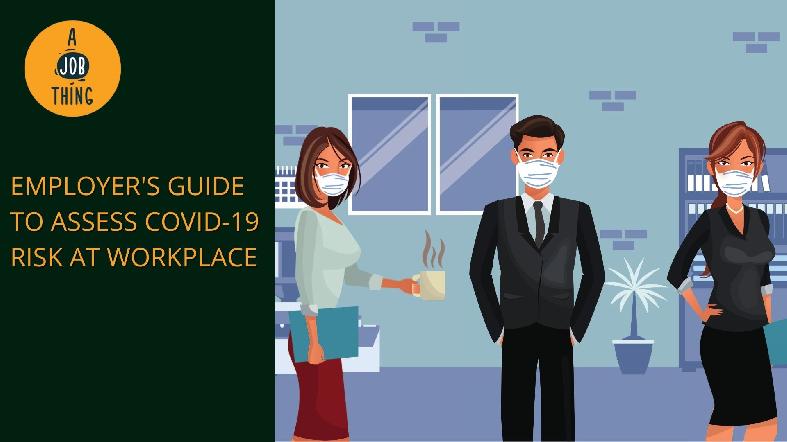
Employer’s Guide to Conduct COVID-19 Risk Assessment at Workplace
Are You Hiring?
Find candidates in 72 Hours with 5+ million talents in Maukerja Malaysia & Ricebowl using Instant Job Ads.
HIRE NOW
The Health Ministry's Disease Control Division recently updated its guidelines for employers to conduct a risk assessment at the workplace. This guideline's purpose is to help employers assess the workplace's risk status regarding COVID-19 exposure via a checklist of indicators that represent the hazards and control measures to prevent the disease.
Titled the National Testing Strategy, it was developed to determine the testing needs of Malaysia in living with the Covid-19 virus, which includes the working population.
Why should employers carry out risk assessments?
According to the Occupational Safety and Health Act 1994's Section 15, employers are responsible for their workers' safety, health and welfare. Hence, they must conduct an assessment of the workplace's risk status to determine testing needs.
The risk status is specific to every workplace. It is also dependent on numerous indicators.
Testing plays a part in the early identification of cases and close contacts accordingly to manage them and carry out preventive and control measures according to Act 342 of the Prevention And Control of Infectious Diseases Act 1988.
The employer can then choose the appropriate testing strategy to implement at the workplace based on the assessment results.
How employers should use the risk assessment checklist
-
Employers must first assess each indicator according to the workplace's existing status.
-
For each indicator, the employer should add a tick (√) for a positive response and a cross (X) for a negative response to all the questions.
-
If an indicator is considered irrelevant, the employer should remove the indicator from the list altogether, that is, removed from the denominator.
-
The employer should carry out the risk assessment every two weeks.
Indicators to assess risk at the workplace
These are the risk factors and control measures at the workplace:
Risk factors
-
Status of vaccination,
-
Workers' accommodation,
-
Clusters' occurrence,
-
Prolonged clusters,
-
Shared workers or transport,
-
Physical distancing.
Control measures
-
COVID-19 Preparedness and Response Plan,
-
Workplace ventilation system,
-
Safety and health officers or committee,
-
New norms that are practised in the workplace.
Checklist of indicators to assess risk at the workplace
.png)
* Accommodation provided according to the requirements of Act 446 (Amendment) 2019 on Workers’ Minimum Standards of Housing and Amenities Act 1990
.png)
* Requirement under Occupational Safety and Health Act 1994 (Act 514)
Scoring system to measure risk level
This is how the scoring system works:
.png)
If the score is at 60% and above then the workplace is at low risk, if the score is below 60% then the workplace is at high risk.
Testing strategies to apply according to the level of risk obtained
.png)
What employers should do according to the risk level.
Low risk (>80%)
-
Employers must only test workers that experience symptoms.
Intermediate risk (60-80%)
-
Employers must test workers with symptoms,
-
Employers must also test close contacts without symptoms who are at high risk, for instance, unvaccinated or have comorbidities.
High risk (<60%)
-
Employers must test workers with symptoms.
-
Employers must also test close contacts without symptoms who are at high risk, for instance, unvaccinated or have comorbidities.
-
Employers must implement periodical testing of workers without symptoms once every two weeks.
The Disease Control Division urged employers to conduct testing beyond these recommendations, if considered necessary and if they are capable of doing so.
Employers are also required to comply with the testing requirements defined by the health authorities.




